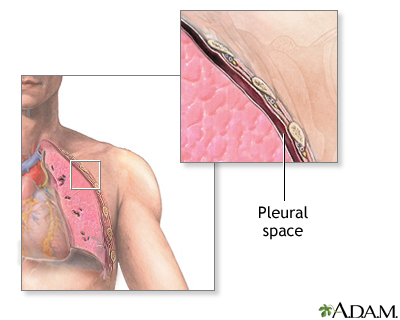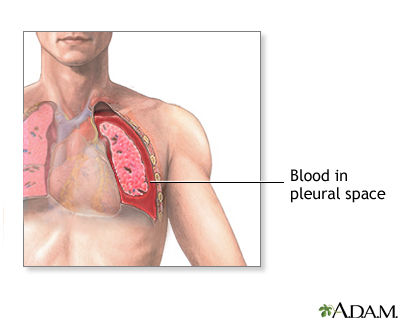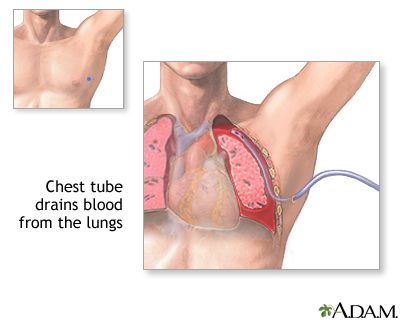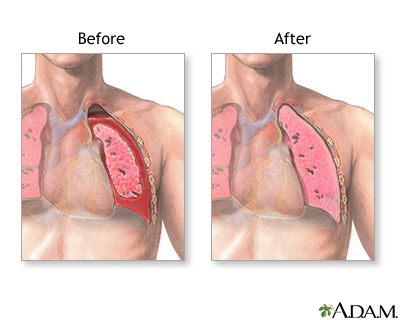Chest tube insertion
| Normal anatomy |
The pleural space is the region between the two filmy membranes that surround the lung. It is normally very thin and contains only with a tiny amount of fluid.
|
| Indication |
If air or fluid, such as blood, gets into the pleural space, the lung can collapse, preventing adequate air exchange. Chest tubes are used to treat conditions that can cause the lung to collapse, such as:
- Air leaks from the lung into the chest (pneumothorax)
- Bleeding into the chest (hemothorax)
- After surgery or trauma in the chest (pneumothorax or hemothorax)
- Pus in the chest (empyema)
|
| Procedure |
Chest tubes are inserted to drain blood, fluid, or air and allow full expansion of the lungs. The tube is placed in the pleural space. The area where the tube will be inserted is numbed with local anesthesia. The patient may also be sedated. The chest tube is inserted between the ribs into the chest and is connected to a bottle or canister that contains sterile water. Suction is attached to the system to encourage drainage. A stitch (suture) and adhesive tape is used to keep the tube in place.
The chest tube usually remains in place until the x-rays show that all the blood, fluid, or air has drained from the chest and the lung has fully re-expanded. When the chest tube is no longer needed, it can be easily removed, usually without the need for medications to sedate or numb the nerves. Antibiotics may be prescribed to prevent or treat infection.
|
| Aftercare |
Recovery from the chest tube insertion and removal is usually complete, with only a small scar.
While the chest tube is in place, the nursing staff will carefully check for possible air leaks, breathing difficulties, and need for additional oxygen. Frequent deep breathing and coughing is necessary to help re-expand the lung, assist with drainage, and prevent normal fluids from collecting in the lungs.
The patient will stay in the hospital until the chest tube is removed. After the tube is removed, a chest x-ray is used to be sure the lung is normally expanded.
|

|
Review Date:
12/22/2011
Reviewed By:
Harvey Simon, MD, Editor-in-Chief, Associate Professor of Medicine, Harvard Medical School; Physician, Massachusetts General Hospital. |
The information provided herein should not be used during any medical emergency or for the diagnosis or treatment of any medical condition. A licensed medical professional should be consulted for diagnosis and treatment of any and all medical conditions. Links to other sites are provided for information only -- they do not constitute endorsements of those other sites. © 1997-
A.D.A.M., Inc. Any duplication or distribution of the information contained herein is strictly prohibited.






